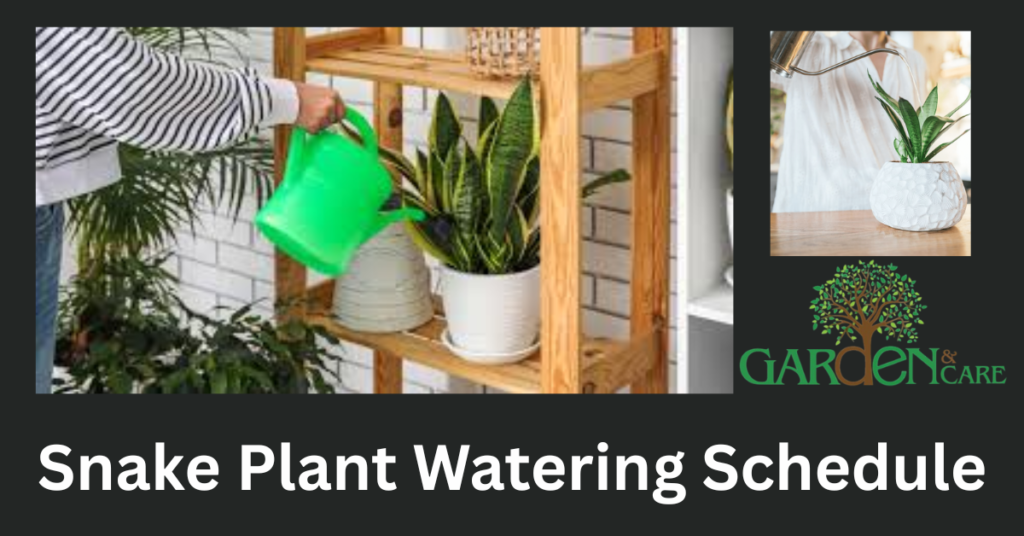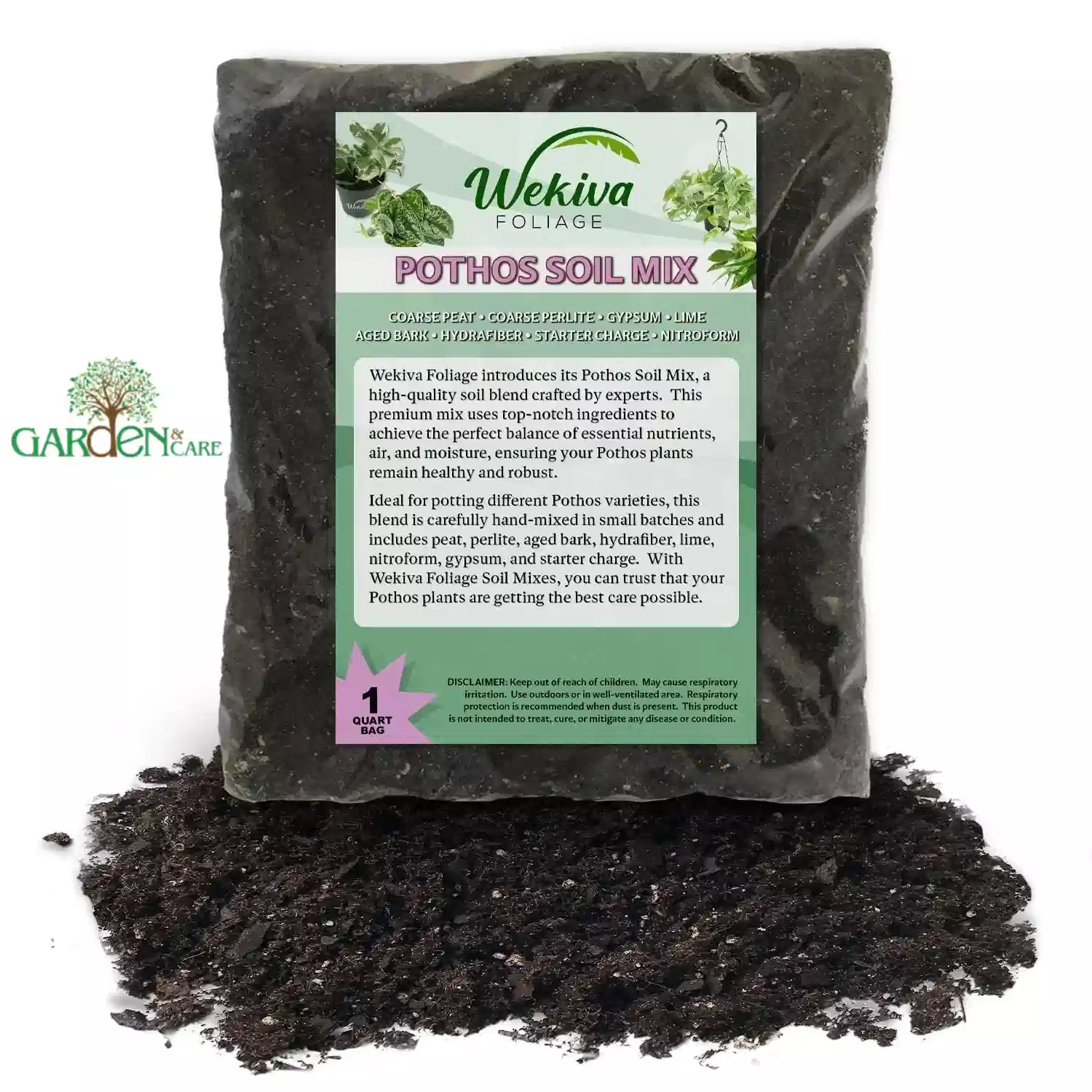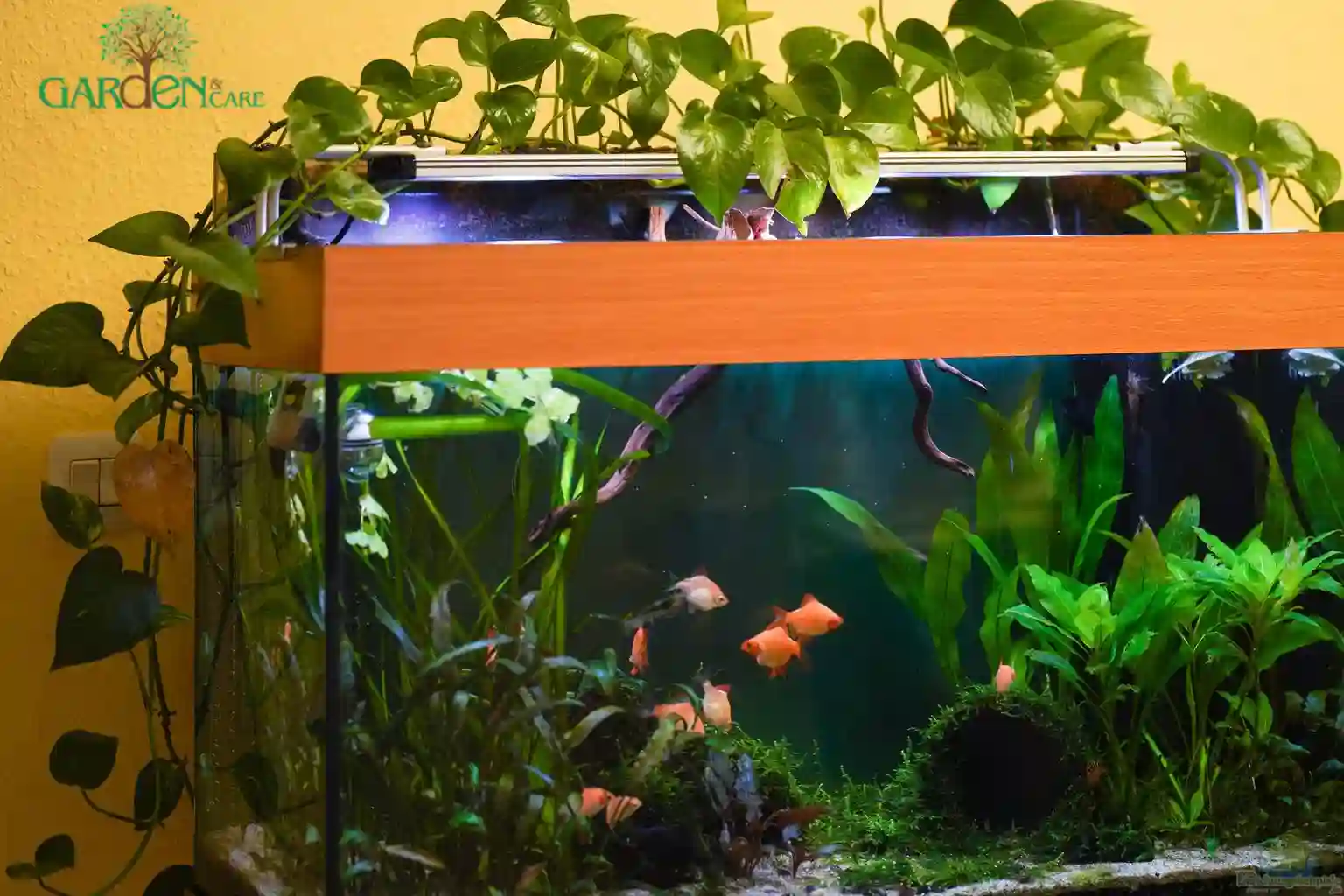Snake plant care is so easy that it almost feels like cheating. These tough, stylish plants thrive on neglect, making them perfect for beginners—or anyone who forgets to water their plants (guilty as charged!). Whether you want to brighten up a dark corner, improve indoor air quality, or just have a low-maintenance green buddy, the Snake Plant (Dracaena trifasciata) is a must-have. In this guide, I’ll walk you through how to take care of a Snake Plant, including watering, propagation, and the best soil mix for Snake Plants—plus, I’ll share how to fix common problems so your plant stays happy. Ready? Let’s dive in!
Snake Plant Care Basics

Taking care of a Snake Plant is so effortless that it feels like the plant is doing you a favor. Seriously, if you’ve ever killed a houseplant (no judgment!), this one will restore your confidence. Snake plant care is refreshingly simple because these plants thrive on neglect. Forgetful waterer? No problem. Low light? They’ll manage. Busy schedule? Your Snake Plant won’t complain.
Let’s break down the basics so you can keep your Dracaena trifasciata thriving with minimal effort.
Light: The Laid-Back Approach
Snake Plants love indirect light but can tolerate low-light conditions like pros. That’s why they’re a favorite for offices and dim corners. Just don’t put them in direct, scorching sunlight—it’s like giving them a sunburn. If you want them to grow a bit faster, place them in a bright, indirect spot. But honestly, they’ll be just fine even if you forget about them in a shaded corner.
Watering: Less is More
This is where most new plant parents go wrong. Snake Plants hate overwatering—it’s their number one enemy. Their thick, succulent-like leaves store water, so they only need a drink every 2–4 weeks (yes, really!). There will be more on the Snake Plant watering schedule later, but here’s the golden rule: when in doubt, don’t water.
Temperature & Humidity: Easygoing Vibes
No need to stress over temperature—if your home is comfortable for you, it’s comfortable for your Snake Plant. They do best between 60–80°F (15–27°C) and don’t mind normal indoor humidity levels. Just keep them away from cold drafts and freezing temperatures.
Pot & Drainage: The Right Home Matters
A well-draining pot is a must. Snake plants hate sitting in water, so go for a pot with drainage holes. Terracotta pots are great because they help wick away excess moisture. When it comes to soil, skip the regular potting mix. In the next section, we’ll discuss the best soil mix for snake plants.
How to Take Care of a Snake Plant

Taking care of a Snake Plant is like having a low-maintenance roommate—it asks for almost nothing but still makes your space look great. If you’re the kind of person who forgets to water plants (or just doesn’t want a fussy one), this one’s for you. Let’s go over the essentials so your Dracaena trifasciata thrives effortlessly.
Light Requirements: Flexible but Picky
One of the best things about Snake Plant care is that these plants adapt to different light conditions. Got a dimly lit apartment? No problem. A bright, sunny spot? That works, too! However, they do best in indirect light—too much direct sun can scorch their leaves, while complete darkness might slow their growth. Think of it like Goldilocks: not too bright, not too dark—just right.
Watering Needs: The “Ignore It” Rule
Want to know the secret to how to take care of a Snake Plant? Water less. Seriously, these plants prefer being underwatered rather than overwatered. Aim for a Snake Plant watering schedule of every 2–4 weeks, depending on the season (less in winter, slightly more in summer). What is the biggest mistake you can make? Watering too often. Always let the soil dry out completely before giving it another drink.
Temperature & Humidity: Easygoing as Ever
If your home is comfortable for you, it’s perfect for your Snake Plant. They thrive in temperatures between 60–80°F (15–27°C) and don’t need any fancy humidity adjustments. Just don’t place them near cold drafts, air conditioners, or heaters—sudden temperature drops can stress them out.
Pot & Drainage: The Right Setup Matters
Snake Plants hate soggy roots, so always use a well-draining pot with drainage holes. Terracotta pots work great because they help wick away excess moisture. When it comes to soil, forget regular potting mix—the best soil mix for snake plants is a succulent or cactus blend mixed with perlite for extra drainage.
Snake Plant Watering Schedule – How Often Should You Water?

If you’ve ever loved a plant a little too much (aka overwatered it to death), you’re not alone. Snake Plant care is all about less is more, and watering is where most beginners go wrong. The truth? Snake Plants thrive on neglect.
So, how often should you water a Snake Plant? Let’s break it down.
The Golden Rule: When in Doubt, Don’t Water
Unlike fussy tropical plants, Snake Plants store water in their thick, sword-like leaves—kind of like a built-in hydration pack. That means they can go weeks without water and still look fabulous.
A good Snake Plant watering schedule is:
✅ Every 2–4 weeks in warmer months (spring & summer)
✅ Every 4–6 weeks in cooler months (fall & winter)
The trick? Always check the soil before watering. Stick your finger about an inch deep—if it’s dry, go ahead and water it. If it’s even slightly damp, wait a few more days.
Signs You’re Overwatering (or Underwatering)
Overwatering is the #1 cause of Snake Plant problems—and trust me, root rot is not a fun thing to deal with. Here’s how to tell if you’re overdoing it:
🚩 Yellow, mushy leaves = too much water
🚩 Root rot (bad smell, black roots) = severe overwatering
On the flip side, an underwatered Snake Plant isn’t nearly as dramatic. The leaves might get a bit wrinkly or crispy at the edges, but once you water them, they’ll bounce right back.
How to Water a Snake Plant the Right Way
Garden and Care
How to Water a Snake Plant the Right Way
Watering isn’t just about frequency—it’s also about how you do it. Here’s a quick step-by-step:
- Use room-temperature water (cold water can shock the roots).
- Water deeply until you see excess draining out of the pot.
- Empty the saucer—never let your Snake Plant sit in standing water.
Pro Tip: If you’re a chronic overwaterer, try using a moisture meter or bottom-watering your plant instead!
By following this Snake Plant watering schedule, you’ll keep your plant happy, hydrated, and free from root rot disasters. Now, let’s talk about the best soil mix for Snake Plants—because, yes, your soil matters just as much as your watering habits!
Best Soil Mix for Snake Plant
Let’s talk dirt—literally. If there’s one thing Snake Plants hate, it’s soggy soil. These tough, stylish plants may be nearly indestructible, but their roots are surprisingly fussy when it comes to moisture. Give them the wrong soil, and you’re basically inviting root rot to move in rent-free. Not on our watch!
Why Well-Draining Soil is a Must
Imagine walking around in wet socks all day. Gross, right? That’s exactly how Snake Plant roots feel when they’re stuck in dense, waterlogged soil. These plants are native to dry regions of West Africa, where they thrive in sandy, well-draining soil. The key to keeping them happy? Mimic those natural conditions with a soil mix that lets excess water drain quickly.
The Best Soil Mix for Snake Plants

Regular potting soil? Nope. That stuff holds way too much moisture. What you need is a blend that keeps the roots dry and happy. Here’s a simple, foolproof mix:
✅ Succulent or Cactus Mix – The base of your mix. It’s lightweight and drains fast. ✅ Perlite or Pumice (20–30%) – These little white particles improve aeration and prevent soil compaction. ✅ Coarse Sand (10–20%) – Helps with drainage and mimics the plant’s natural environment.
Mix these ingredients together, and you’ve got the ultimate well-draining soil for your Snake Plant. If you don’t want to DIY it, look for a high-quality cactus or succulent mix at your local garden center. Just check the label—some brands sneak in too much peat moss, which holds onto moisture (not ideal for Snake Plant care).
Why Regular Potting Soil Won’t Cut It
Standard potting soil might work for most houseplants, but for Snake Plants, it’s a disaster waiting to happen. It holds onto water for too long, which increases the risk of overwatering—aka the fast track to root rot. If you must use potting soil, at least mix in perlite and sand to improve drainage.
Repotting Tips: Give Your Snake Plant the Best Home
Even the perfect soil mix won’t help if your pot is wrong. When repotting, always choose a pot with drainage holes—this lets excess water escape. Terracotta pots are a great choice because they’re porous and help wick away moisture, keeping the soil from staying too damp.
Pro Tip: Bottom-Watering for Extra Protection
If you’re a chronic overwaterer (no shame, we’ve all been there), try bottom-watering your Snake Plant. Place the pot in a shallow dish of water and let the soil soak up moisture from the bottom. After about 10–15 minutes, remove the pot and let it drain completely. This method helps prevent overwatering by giving the plant just the right amount of moisture.
The Bottom Line
Choosing the best soil mix for Snake Plants is crucial for their health. Stick to a fast-draining blend, avoid moisture-retaining potting soil, and pair it with a breathable pot to keep your plant thriving. Trust me, your Snake Plant will thank you by growing tall, strong, and totally drama-free!
How to Propagate Snake Plants in Water & Soil
So, you love your Snake Plant and want more of them? Good news—propagating Snake Plants is ridiculously easy. Whether you want to multiply your plant collection or save a struggling Snake Plant, you can grow new ones from just a single leaf. It’s like plant magic!
There are two main ways to propagate a Snake Plant: in water and in soil. Both work great, so pick the one that fits your vibe. Let’s break it down step by step.
Water Propagation Method – Watching Roots Grow Like a Science Experiment
If you love seeing things in action, water propagation is for you. Watching roots grow day by day is weirdly satisfying—kind of like watching a time-lapse in real life.
How to Propagate a Snake Plant in Water:
- Pick a Healthy Leaf: Choose a mature, healthy leaf (not one that’s yellowing or damaged) and cut it near the base using clean, sharp scissors.
- Cut It Into Sections (Optional): If the leaf is large, you can cut it into 3–4-inch sections. Just make sure to remember which end is the bottom—it won’t root if you plant it upside down!
- Let It Callous Over: Set the cuttings aside for a day or two so the cut ends can dry. This step helps prevent rotting.
- Place in Water: Stick the cuttings in a jar of water, submerging just the bottom part. Use a clear container so you can admire the roots as they grow.
- Find a Good Spot: Place the jar in bright, indirect light. Change the water every few days to keep things fresh and avoid mold.
- Wait for Roots: In about 3–6 weeks, you should see roots forming! Once they’re a couple of inches long, you can transfer them to soil.
✅ Pros of Water Propagation:
- You get to see root growth in real time (so cool!).
- It’s easy to monitor for any issues, like rot.
❌ Cons:
- The transition to soil can be tricky—some cuttings struggle to adapt.
Soil Propagation Method – The “Set It and Forget It” Approach
If patience isn’t your thing and you want to skip the whole water-watching phase, soil propagation is the way to go. It mimics how Snake Plants naturally spread in the wild—low effort, high reward.
How to Propagate a Snake Plant in Soil:
- Cut a Healthy Leaf: Just like in water propagation, pick a strong, healthy leaf and cut it near the base.
- Let It Dry: Allow the cut to sit out for a day or two until the cut end callouses over. This helps prevent rot once planted.
- Plant in Well-Draining Soil: Use a succulent or cactus mix (aka the best soil mix for Snake Plants) and plant the cutting about an inch deep with the right side up.
- Water Sparingly: Give it a light watering and then forget about it for a couple of weeks. Overwatering at this stage is the fastest way to kill your new plant.
- Be Patient: Roots take a bit longer to develop in soil—usually around 4–8 weeks. Just keep it in bright, indirect light and resist the urge to overwater.
✅ Pros of Soil Propagation:
- No need to transition from water to soil.
- Less maintenance—once planted, it’s good to go.
❌ Cons:
- You don’t get to see root growth happening.
- It takes a bit longer than water propagation.
Bonus: Propagating Snake Plants by Division
If your Snake Plant is large and has multiple sections (called rhizomes), you can propagate by dividing the plant. This method is perfect if you want instant new plants.
How to Do It:
- Remove the Plant from Its Pot: Gently take your Snake Plant out of the pot and shake off excess soil.
- Look for Natural Divisions: Find areas where the plant has multiple growth points and carefully separate them using a clean knife or your hands.
- Repot the New Sections: Plant each division in a well-draining mix and water lightly.
- Watch It Thrive: These already have roots, so they’ll grow faster than leaf cuttings.
Common Mistakes to Avoid

🚩 Planting Cuttings Upside Down: Remember which end is the bottom—roots only grow from the original base of the leaf. 🚩 Overwatering: Whether in soil or water, too much moisture leads to rot. When in doubt, water less. 🚩 Skipping the Callousing Step: Always let cuttings dry before planting to prevent rot.
The Bottom Line
Propagating Snake Plants is one of the easiest ways to expand your plant family (or share with friends!). Whether you choose water or soil propagation, the key is patience. Before you know it, you’ll have a whole army of Snake Plants ready to brighten up your space.
Now that you know how to propagate a Snake Plant in water & soil, why not try it yourself? Let me know in the comments—are you a water-watcher or a soil-setter?
Common Snake Plant Problems and How to Fix Them
So, your Snake Plant isn’t looking as Instagram-worthy as you’d hoped? Don’t worry—you’re not alone. Even though Snake Plant care is ridiculously easy, these tough little guys can still run into issues. But here’s the good news: most problems are fixable. You just need to know what’s going wrong and how to turn things around.
Let’s troubleshoot some of the most common Snake Plant problems and how to fix them!
1. Yellowing Leaves – Uh-oh, Is It Overwatered?
If your Snake Plant’s leaves are turning yellow and feeling mushy, there’s a 99% chance it’s getting too much water. Overwatering is the number one killer of these plants. Their roots hate sitting in soggy soil, and too much moisture leads straight to root rot.
How to Fix It:
✅ Stop watering immediately—let the soil dry out completely before even thinking about watering again.
✅ Check the roots: If they’re black and mushy, trim off the rotten parts with sterilized scissors.
✅ Repot in fresh, well-draining soil (check out the best soil mix for Snake Plants section for a foolproof mix).
✅ Use a pot with drainage holes. If your pot doesn’t have them, it’s basically a death trap for your plant.
💡 Pro Tip: If you’re an “over-waterer,” use a moisture meter or bottom-watering method to prevent drowning your plant.
2. Drooping Leaves – A Cry for Help
Snake Plant leaves should stand tall like swords. If they’re drooping, something’s off. The usual culprits? Overwatering, lack of light, or a root-bound plant.
How to Fix It:
✅ Check the soil—if it’s wet, let it dry out before watering again.
✅ Move your plant to a spot with more bright, indirect light (low light is fine, but too little can weaken the leaves).
✅ If it’s been in the same pot for years, it might be root-bound. Repot it into a slightly larger pot with fresh soil.
💡 Pro Tip: If your Snake Plant is in a dark corner, rotate it every few weeks so all sides get some light exposure.
3. Brown Tips – Thirsty or Stressed?
Brown tips on Snake Plants are like split ends for plants—they’re not cute, but they don’t mean the whole thing is doomed. This usually happens due to underwatering, dry air, or chemical buildup from tap water.
How to Fix It:
✅ Water your plant (but don’t drown it)—follow the Snake Plant watering schedule and only water when the soil is completely dry.
✅ If your home is super dry, try misting the air nearby (but don’t mist the plant directly).
✅ Use filtered or distilled water—tap water with too many minerals can cause crispy leaf tips.
💡 Pro Tip: If brown tips bother you, trim them off with clean scissors. Just don’t cut into the green part!
4. Root Rot – The Silent Killer
Root rot is every plant parent’s worst nightmare. By the time you notice it, the damage is usually done. But if you act fast, you can still save your Snake Plant!
How to Fix It:
✅ Take your plant out of the pot and inspect the roots. Black, mushy roots? Snip them off immediately.
✅ Let the remaining healthy roots dry for a day before repotting.
✅ Repot in a dry, well-draining soil mix and cut back on watering.
✅ Make sure your pot has drainage holes. No exceptions!
💡 Pro Tip: If root rot keeps happening, switch to a terracotta pot—it helps absorb excess moisture and keeps the soil from staying wet too long.
5. Pests – Tiny Intruders Alert!
Think Snake Plants are pest-proof? Not quite. While they’re pretty resistant, they can still attract unwelcome guests like spider mites, mealybugs, and fungus gnats.
How to Fix It:
✅ Wipe the leaves with a damp cloth to remove dust and pests.
✅ For spider mites and mealybugs, spray with a mix of water and a few drops of neem oil.
✅ If you see tiny flies (fungus gnats), let the soil dry out and add a layer of sand on top to prevent eggs from hatching.
💡 Pro Tip: Regularly dusting your plant and checking under the leaves helps keep pests away before they become a full-blown infestation.
Final Thoughts
Snake Plant care is easy, but no plant is completely problem-free. The key to keeping yours happy is knowing the warning signs and acting fast. Whether it’s yellowing leaves from overwatering, drooping due to low light, or brown tips from dry air, a little TLC can bring your plant back to life.
Have you got a Snake Plant problem I didn’t cover? Drop a comment below—I’d love to help you troubleshoot!
Conclusion
Taking care of a Snake Plant is about as easy as it gets. With minimal effort—occasional watering, well-draining soil, and a little indirect light—you’ll have a thriving, stylish plant that purifies your air and adds a touch of greenery to any space. Whether you’re a total beginner or just want a low-maintenance plant that won’t throw tantrums, the Snake Plant is a perfect choice.
Now that you know how to keep your Snake Plant happy, all that’s left to do is sit back and enjoy its effortless beauty. Do you have any Snake Plant success stories (or struggles)? Drop them in the comments—I’d love to hear how your green buddy is doing!





Leave a Reply